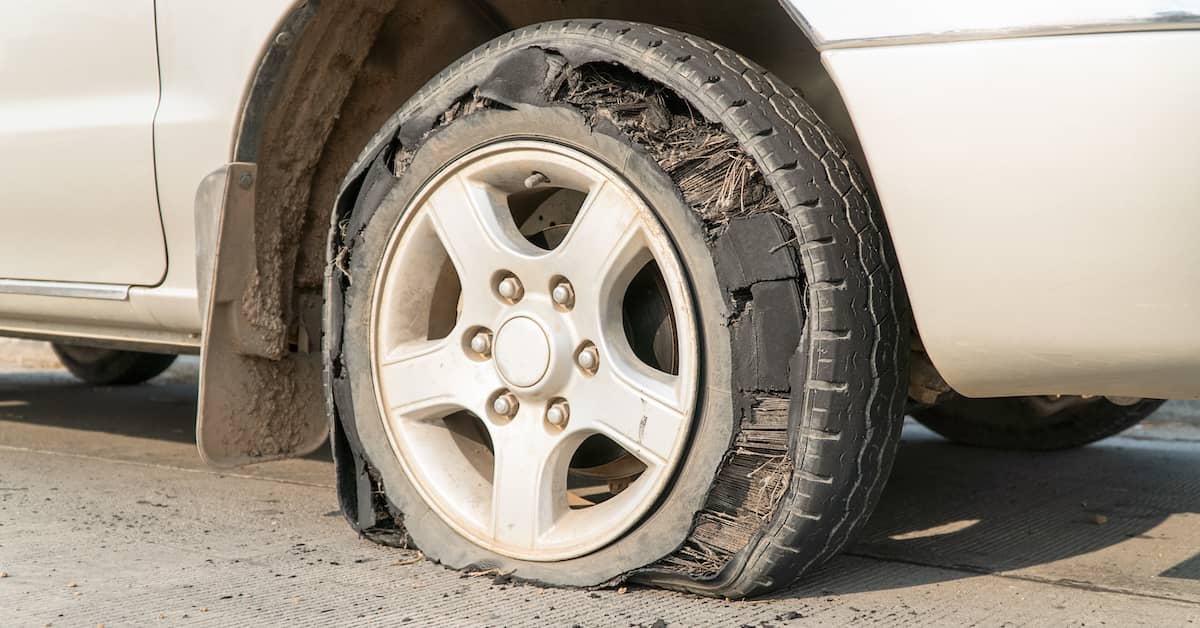
The National Highway Traffic Safety Administration (NHTSA) estimates that every year, more than 700 traffic accident fatalities result from tire-related crashes. The term “tire blowout” refers to situations in which tires lose air rapidly, resulting in the loss of vehicle control. In a blowout, a tire quickly deflates, putting the vehicle at high risk for a rollover or collision, and drivers and passengers at risk for serious, life-altering injuries.
At Studinski Law, LLC, our experienced car accident lawyers have helped many people throughout Wisconsin pursue justice after a wreck. We are committed to helping our clients recover the compensation they deserve for their physical, emotional, and financial losses due to someone else’s negligence.
A tire blowout can happen at any time. Anything that severely diminishes a tire’s air pressure and prevents the tire from supporting a vehicle’s weight can cause a blowout that leads to a serious accident.
Some of the most common causes of tire blowouts include:
If you fail to replace tires that are old and worn, you are putting yourself at a high risk of experiencing a tire blowout. In some cases, tires are defective and may blow out because of a manufacturer’s error. To address both of these issues, experts recommend that you have your tires inspected every 6,000 miles to ensure they are in good condition and safe to drive on roads.
Routinely getting your tires rotated is an essential step to preventing tire blowouts. When tires are not rotated in compliance with the manufacturer’s recommendations, they can wear down unevenly. Uneven tread wear significantly increases the risk of a tire blowout.
Underinflated tires are at high risk for blowing out. This is because low air pressure causes wear on the sides of a tire. This is dangerous because it makes the sides of tires thinner than the treads that meet a road’s surface. Low air pressure creates weaknesses on the tire through which air can blast in a blowout.
It is possible to run over a nail and not notice it for months. However, this scenario can set your tire up for a blowout, even if the slow loss of air isn’t immediately noticed. As air slowly seeps out around a nail, the tire weakens. Over time, this can wear down the sides of the tire, eventually leading to a blowout if the nail isn’t removed and the tire isn’t repaired.
Both passenger vehicles and commercial 18-wheelers are subject to weight restrictions. When vehicles are overloaded, undue stress is put on tires. When tires aren’t rotated regularly, uneven tread wear can develop, creating a particular risk for weak tires to blow out under excess weight.
In addition to the dangers of other drivers and traffic risks, roads themselves can be dangerous places. Potholes and debris can destroy a tire faster than almost anything else. You can blow out a tire when you run over a large object or hit a pothole. You can also blow out a tire if you hit a curb or run over piercing objects such as glass or nails. If they are already worn, your tires are particularly susceptible to blowing out.
There is a correlation between improper braking practices, bad brakes, and tire blowouts. Excessively “slamming” on your brakes can cause the tread to quickly wear down and increase the likelihood of a blowout.
Tire blowouts can occur when tires are mismatched or the wrong size for the vehicle. It is the responsibility of every vehicle owner to ensure their tires are properly fitted and inflated.
Heat can play a big role in tire safety. Driving on roads in high temperatures for long periods of time can put serious strain on a tire’s integrity, making it much more susceptible to a blowout. It’s no coincidence, therefore, that the majority of tire blowouts occur during the summer months. In fact, the period between mid-May and early October is sometimes referred to as “tire blowout season.”
Driver negligence can involve any of the situations listed above. Blowouts are often the result of a driver failing to properly inflate the tires on their vehicle or failing to change tires that are overworn. As a driver, you have a responsibility to adequately care for your vehicle’s maintenance and drive in a safe and responsible manner. When drivers fail in their responsibilities, they may be held accountable for any damages that result from their carelessness.
Studinski Law, LLC has extensive experience in a wide range of car accident cases. We have successfully helped many individuals throughout Wisconsin achieve the justice and compensation they deserve through successful verdicts and settlement negotiations. We understand the hardships you may be facing after a serious accident and we are committed to helping you recover the maximum compensation you need to move forward.
If you were involved in a car accident caused by another driver’s negligence, contact the car accident lawyers at Studinski Law, LLC today at (715) 343-2850 to discuss your case for free. We proudly serve Plover, Marshfield, and other areas throughout Wisconsin.
